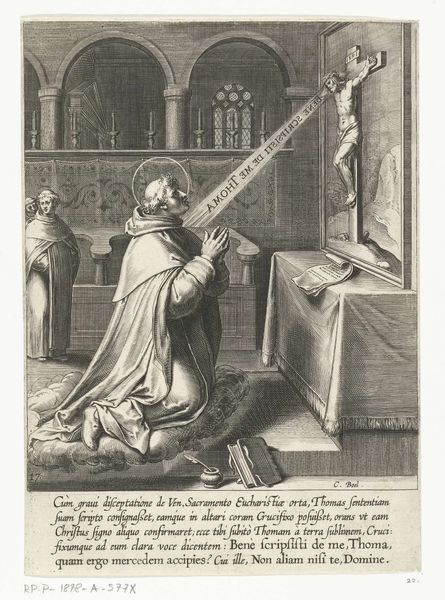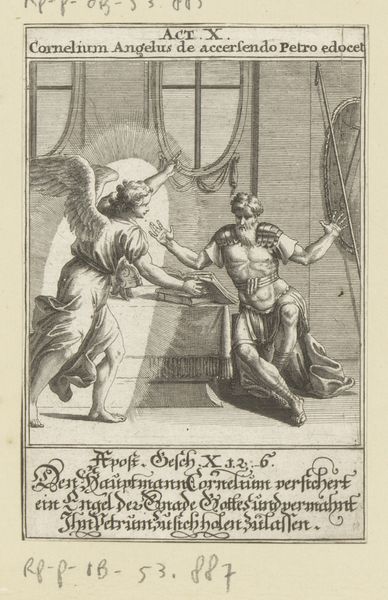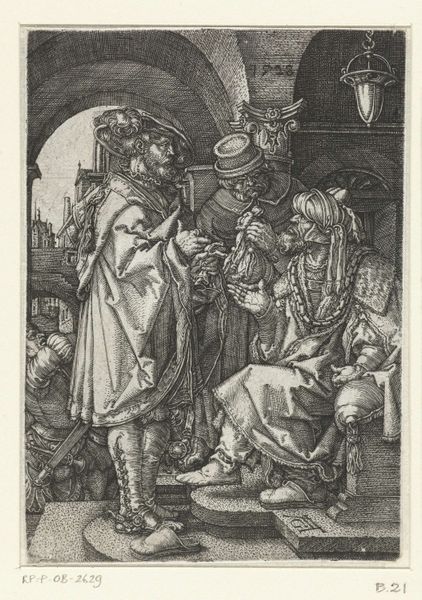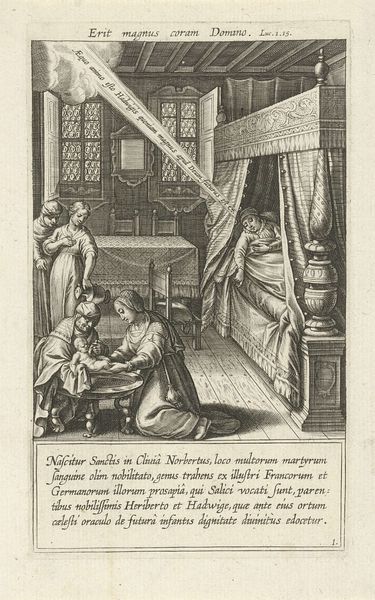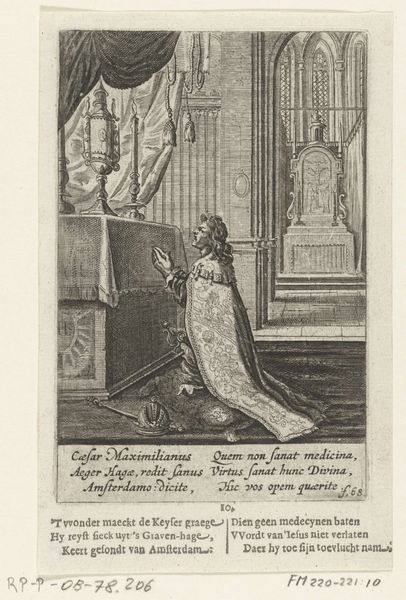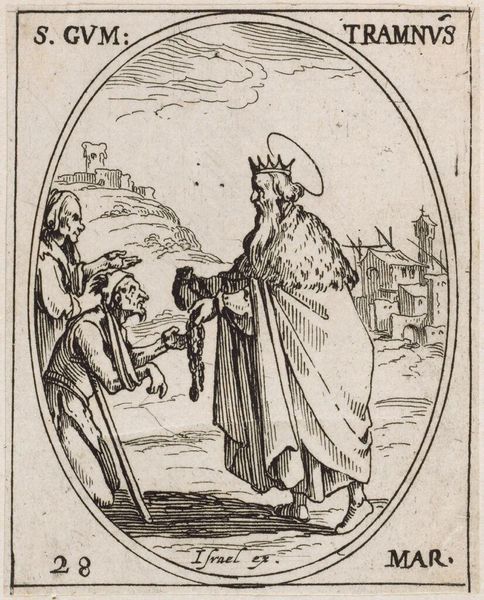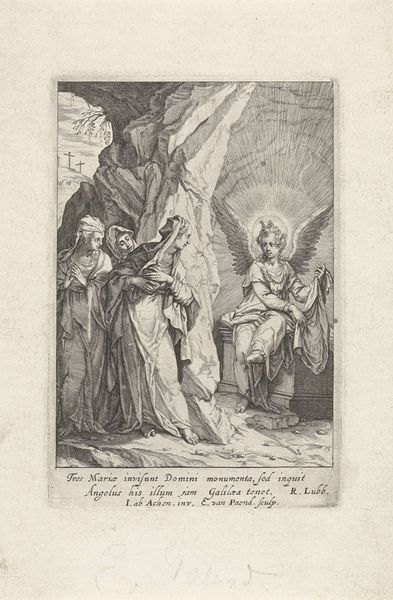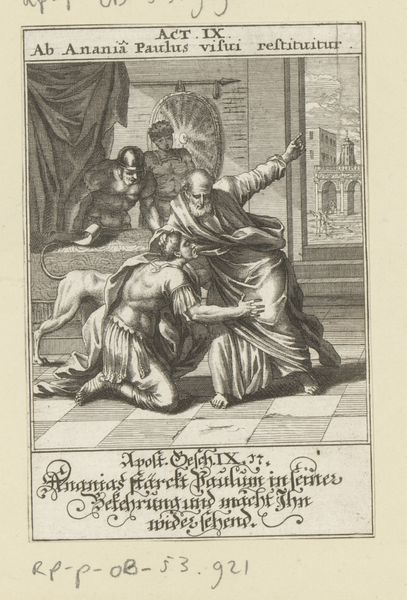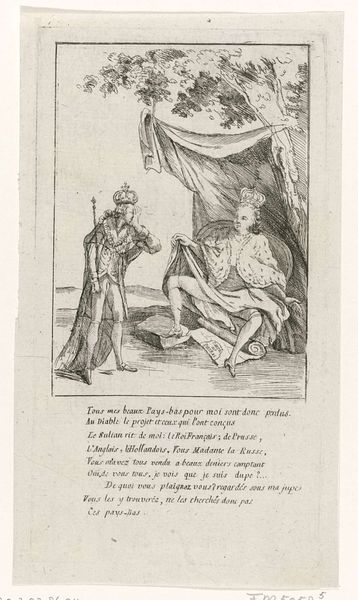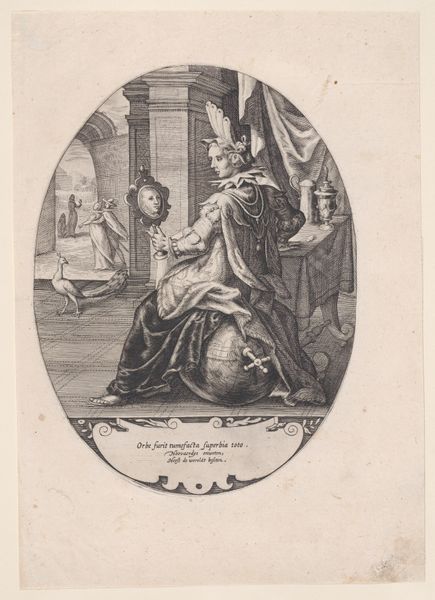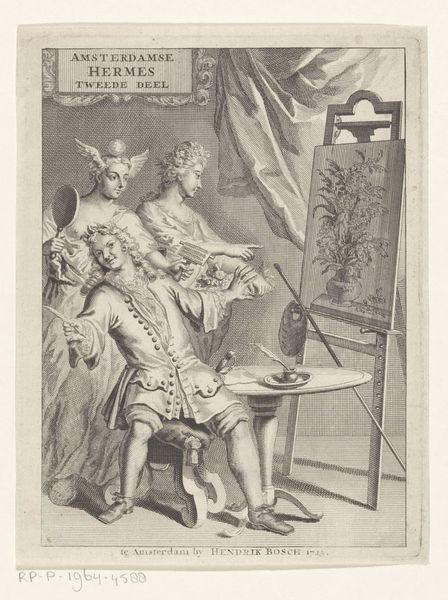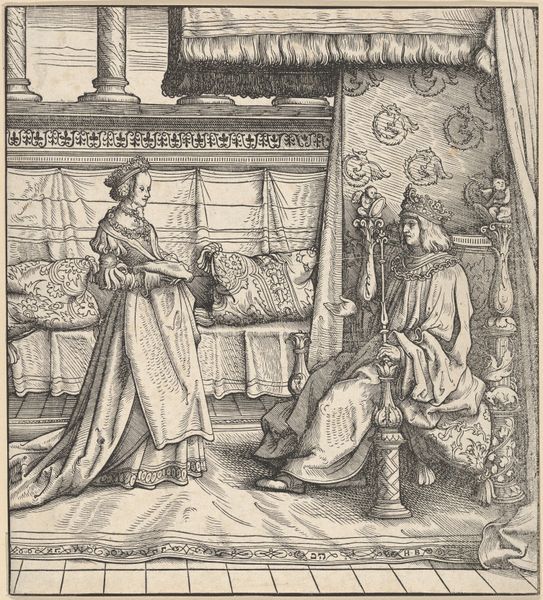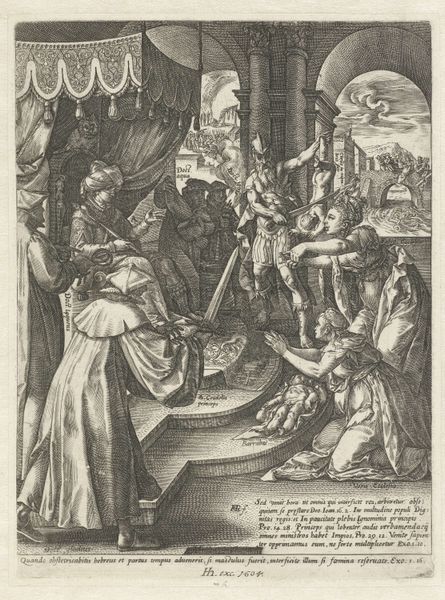
print, etching, engraving
#
baroque
# print
#
etching
#
old engraving style
#
history-painting
#
engraving
Dimensions: height 152 mm, width 93 mm
Copyright: Rijks Museum: Open Domain
Curator: Here we have Cornelis Galle I’s "Vision of Saint Augustine," an engraving dating back to 1622. It captures a pivotal moment of spiritual encounter. Editor: The fine line work is remarkable; almost impossibly detailed. It gives the scene an ethereal quality, despite the relatively rigid composition, wouldn't you agree? Curator: It's interesting that you point that out. Galle certainly aimed to create a visual representation of spiritual authority. The engraving depicts Saint Norbert receiving the Augustinian rule from Saint Augustine himself. Augustine, hovering amidst radiant light, presents the sacred text, dictating the course of Norbert's new society and framing their obedience to a divinely sanctioned system. Editor: This is also clear by looking at the choice of materials, and the means by which it was created - an engraving is inherently reproducible, allowing these ideas about divine rule and authority to spread easily and efficiently through mass production and dissemination. The weight of Augustine's robe and facial expression are rendered meticulously, really underscoring the gravitas of the moment for the audience. We have Norbert, humbly kneeling with a wealth of symbolic religious objects that emphasizes how material possessions and structures of governance, are all being harnessed toward religious and spiritual objectives. Curator: Indeed. The arrangement tells a very particular story about religious rule. Look closer at Norbert's posture and positioning relative to the saint. He’s literally presented as a student and submissive recipient. Augustine literally floats over him. Note how it frames the social and religious hierarchies in Europe at the time and how power was divinely given, which underscores the need for continued support from the noble patrons and other members of the church. Editor: This certainly shows how devotional works reinforce prevailing orthodoxies. It’s not only the subject matter, but the use of printed materials, engraving, and production to assert these systems of value that solidify our modern understanding. Curator: Understanding such intersections reveals how seemingly timeless art becomes a mirror reflecting, reinforcing, and even interrogating our cultural constructs. Editor: The materials used and the social function this artwork plays reveal not only aesthetic concerns but power relations and systems of dissemination within early modern European society.
Comments
No comments
Be the first to comment and join the conversation on the ultimate creative platform.
